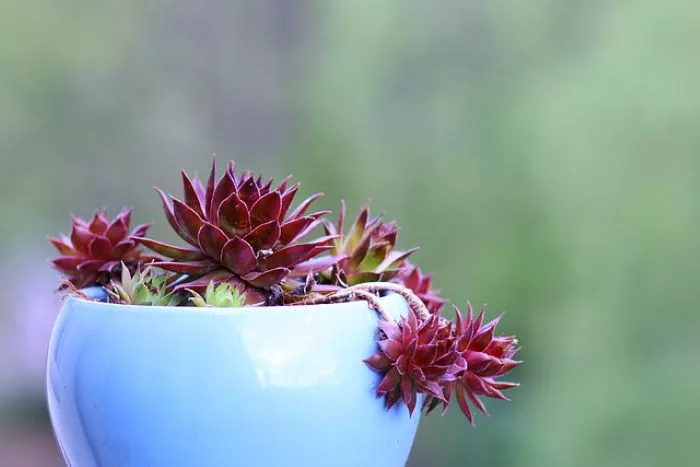Succulents are popular houseplants known for their unique shapes, vibrant colors, and low maintenance needs. However, caring for succulents in winter can be challenging. During this season, their watering needs change significantly. Understanding how to water succulents in winter is crucial for their health and longevity. This article will provide a detailed guide on the best practices for watering succulents during the colder months.
Understanding Succulent Needs
Succulents are adapted to store water in their leaves, stems, and roots. This adaptation allows them to survive in arid environments. However, these plants also require specific care during winter. In winter, succulents enter a dormant phase. Their growth slows down, and they require less water than during the active growing season.
Environmental Factors in Winter
Several environmental factors influence how often and how much to water succulents in winter. These include temperature, humidity, and light levels.
Low temperatures can lead to slower evaporation rates. This means that the soil may retain moisture longer than in warmer months. Additionally, indoor heating can dry out the air, affecting the moisture levels in the soil.
Light levels also decrease in winter. Succulents may not receive enough light, leading to weakened plants. Insufficient light can affect their ability to absorb water efficiently.
Assessing Soil Moisture
Before watering succulents in winter, it is essential to check the soil moisture. Overwatering is a common mistake that can lead to root rot. The best way to assess soil moisture is to use your finger. Insert your finger about an inch into the soil. If the soil feels dry at this depth, it is time to water. If it feels moist, wait a few more days before checking again.
Using a moisture meter can also be helpful. This tool provides a more precise reading of soil moisture levels.
Watering Techniques
When watering succulents in winter, it is essential to use the right technique. Watering should be thorough but infrequent. This means applying enough water to saturate the soil but allowing it to dry out completely between waterings.
Water the succulent until you see it draining from the bottom of the pot. This ensures that the roots receive adequate moisture. Avoid letting the plant sit in standing water, as this can lead to root rot.
Frequency of Watering
The frequency of watering succulents in winter varies based on several factors. Generally, succulents need to be watered every two to four weeks during this season. However, this can vary based on the type of succulent, the size of the pot, and the environmental conditions.
For example, smaller pots tend to dry out faster than larger ones. Additionally, some succulent varieties are more drought-tolerant than others. It is important to observe your plants and adjust your watering schedule accordingly.
Signs of Underwatering and Overwatering
Recognizing the signs of underwatering and overwatering is crucial for succulent care.
Signs of underwatering include shriveled leaves and a general lack of vitality. The leaves may appear wrinkled or shrunk. If you notice these signs, increase your watering frequency slightly.
On the other hand, overwatered succulents may exhibit yellowing leaves, mushy stems, and a foul odor from the soil. If you suspect overwatering, allow the soil to dry out completely before watering again. In severe cases, you may need to repot the succulent in fresh, dry soil.
Choosing the Right Soil
Using the right soil mix is essential for succulent health. A well-draining soil mix helps prevent water retention, which is crucial in winter. Commercial cactus and succulent mixes are ideal, as they provide the drainage succulents need.
If you prefer to make your own mix, combine regular potting soil with perlite or coarse sand. This will improve drainage and aeration, reducing the risk of root rot.
Pot Selection
The type of pot you choose can also affect how often you need to water your succulents in winter. Terracotta pots are a popular choice because they are porous and allow moisture to evaporate more quickly. This helps prevent overwatering.
Plastic pots, while retaining moisture longer, can lead to waterlogged soil if not monitored closely. If using plastic pots, be extra cautious with your watering schedule.
Humidity Considerations
Humidity levels can affect how often you water succulents in winter. Indoor heating can create dry air, which may require you to water more frequently. Conversely, if your home is particularly humid, you may need to water less often.
To help maintain optimal humidity levels, consider placing a small humidifier near your plants. Alternatively, you can group your succulents together to create a microenvironment with slightly higher humidity.
Light Requirements
During winter, succulents may not receive enough natural light. This can lead to etiolation, where the plants stretch toward the light source and become leggy. To prevent this, place your succulents in a bright location, such as near a south-facing window.
If natural light is insufficient, consider using grow lights. These lights can provide the necessary illumination for healthy growth.
Conclusion
Watering succulents in winter requires careful attention to their changing needs. By understanding the environmental factors, assessing soil moisture, and using proper watering techniques, you can ensure your succulents thrive even in the colder months.
Monitor your plants closely for signs of underwatering or overwatering. Adjust your watering schedule based on their specific needs. With the right care, your succulents can remain healthy and vibrant throughout winter.
By following these guidelines, you can enjoy the beauty of your succulents year-round. Remember that each plant is unique, and observing their responses will help you become a more effective succulent caretaker.


